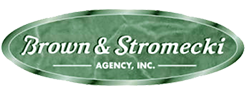Companies that self-insure their group health benefits, or are in partial self-insured plans called level-funding, are this year seeing steep increases in the cost of their stop-loss insurance as the number and costs of high-dollar claims skyrocket.
Stop-loss insurance steps in to pay claims when they reach “catastrophic levels,” or if the aggregate amount of claims exceeds a set dollar amount. The increases in stop-loss insurance rates are also affecting group health plan providers, which are passing on their higher costs to employers.
The main culprit is the increasing number of catastrophic claims and their overall costs. These have forced losses on stop-loss insurers, which are in turn raising rates.
Depending on deductible sizes, the average cost of stop-loss insurance increased anywhere from 7% to 18% between 2021 and 2023, according to the “2023 Aegis Risk Medical Stop-Loss Premium Survey.” Experts predict that stop-loss insurance premiums will continue rising over the next few years.
Rate drivers
The increasing rates are being driven by:
- Highly expensive therapies becoming available for patients. Some drug regimens can cost more than $100,000 a year.
- Higher overall medical costs.
- An increasing frequency and cost of catastrophic claims (those that cost more than $250,000).
Example: Stop-loss insurer Sun Life noted in a report that it’s seen a 45% increase in million-dollar-plus catastrophic claims to 158 claims per million covered members in 2022, from 109 per million covered members in 2019.
Sun Life said that million-dollar-plus claims appeared across a broad range of medical conditions, from cancer to less common conditions like hemophilia. Depending on the condition, contributing factors included long-term hospitalizations, specialty drugs, treatment of comorbid (secondary) conditions and complicated surgeries.
Other stop-loss insurers are seeing similar trends, leading to the recent spate of rate hikes.
Here’s what’s happening with rates:
Individual stop-loss cover — This coverage kicks in when a single plan enrollee has catastrophic medical bills. Deductibles can range from as low as $50,000 per individual to as high as $1 million or more per covered enrollee during the policy year.
Rates have been increasing across all deductible lines, on average from 6.9% for the lowest available deductible of $100,000 to 18.3% for a deductible of $750,000.
Aggregate cover — This type of coverage kicks in when aggregate claims costs exceed a certain percentage of expected health claims. The most typical cover kicks in when total claims costs in a policy year exceed 125% of expected costs (decided upon when the policy is written).
Rates have been increasing for this as well, but costs less so, with the median premium at $8.55 per enrollee and the average in high-deductible plans being $4.11. Rates have been ticking up at similar levels as for individual stop-loss cover.
The takeaway
If you are a self-insured employer or have a level-funded plan, you’ll want to budget for these higher stop-loss premiums as you will likely see your premium rise.
Stop-loss is an important part of self-insurance as well as traditional insurance, since group health carriers also purchase it to limit their liability for catastrophic claims.
